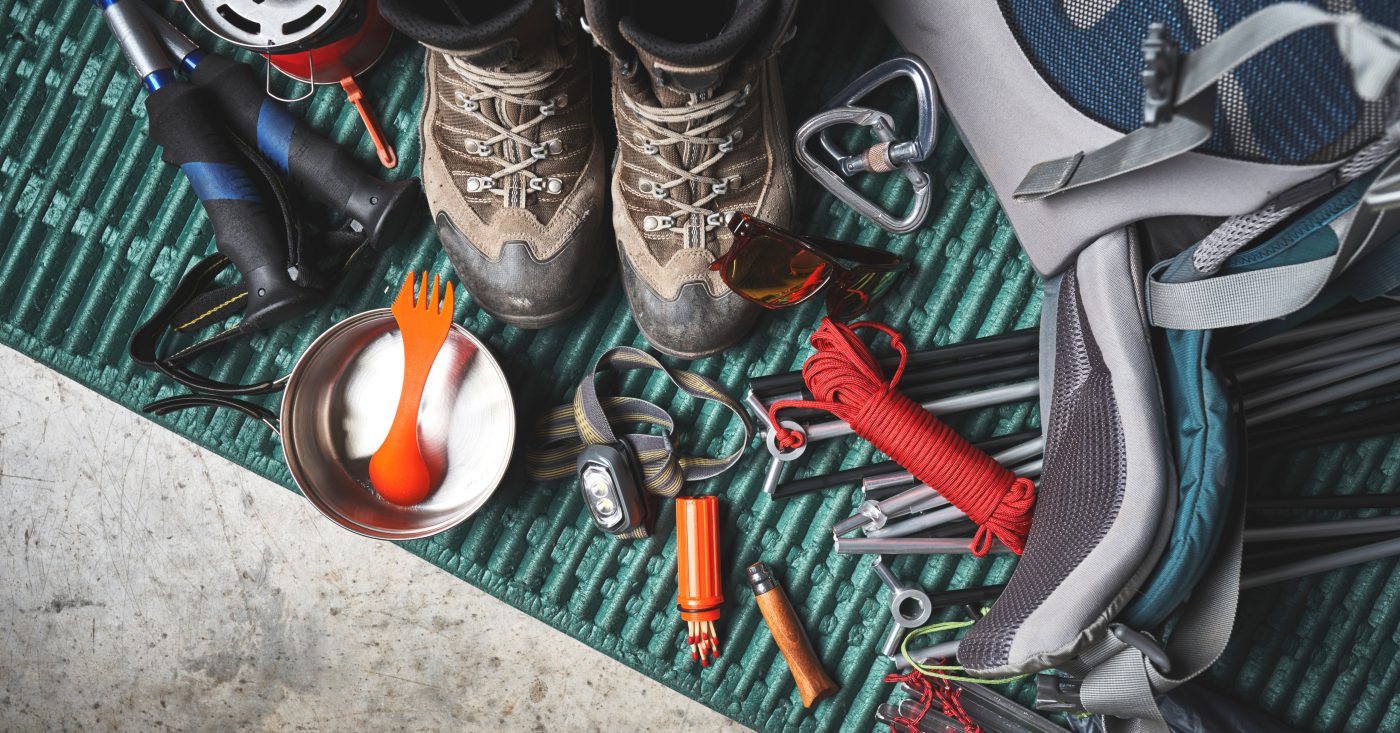No products in the cart.
Journal
A comprehensive guide to essential hiking gear
Embarking on a hiking adventure is an exhilarating experience, but ensuring you have the right gear is crucial for a safe and enjoyable journey. From traversing rugged trails to braving unpredictable weather conditions, having the appropriate hiking gear can make all the difference. This comprehensive guide will walk you through the essential hiking gear that will enhance your comfort, safety, and overall enjoyment on the trail.
Footwear:
a. Hiking Boots:
- Sturdy hiking boots provide ankle support and protection on uneven terrain.
- Choose waterproof boots for wet conditions and breathable ones for warmer weather.
b. Moisture-Wicking Socks:
- Moisture-wicking socks help keep your feet dry and prevent blisters.
- Consider wearing a moisture-wicking liner sock underneath for added comfort.
Clothing:
a. Weather-Appropriate Layers:
- Wear moisture-wicking base layers to manage sweat.
- Choose insulating layers for warmth and waterproof, breathable outer layers for rain.
b. Convertible Pants:
- Convertible pants are versatile, allowing you to adapt to changing weather by converting them into shorts.
c. Hat and Sunglasses:
- A wide-brimmed hat or a cap shields you from the sun.
- UV-protective sunglasses keep your eyes safe from harmful rays and glare.
Backpack:
a. Capacity:
- Choose a backpack with an appropriate capacity for your hike’s duration.
- Daypacks are suitable for short hikes, while larger backpacks are ideal for multi-day trips.
b. Comfort and Fit:
- Ensure the backpack fits well, distributing weight evenly on your shoulders and hips.
- Padded shoulder straps and a hip belt enhance comfort during long hikes.
Navigation Tools:
a. Map and Compass:
- Carry a detailed map of the trail and a compass for navigation.
- Learn basic map-reading and compass skills for added safety.
b. GPS Device:
- A GPS device or smartphone with a reliable hiking app can provide real-time navigation assistance.
Safety Essentials:
a. First Aid Kit:
- A compact first aid kit should include bandages, antiseptic wipes, pain relievers, and any personal medications.
b. Emergency Shelter:
- A lightweight emergency shelter, such as a space blanket or bivy, can provide protection in unexpected situations.
c. Multi-Tool:
- A multi-tool with a knife, scissors, and other features can be invaluable for various tasks.
Hydration and Nutrition:
a. Water Bottle or Hydration System:
- Stay hydrated with a durable water bottle or a hydration system like a reservoir.
- Plan water resupply points for longer hikes.
b. High-Energy Snacks:
- Pack lightweight, high-energy snacks like trail mix, energy bars, and dried fruits.
Illumination:
a. Headlamp or Flashlight:
- A reliable headlamp or flashlight is essential for navigating trails in low-light conditions.
- Carry extra batteries to ensure a continuous power source.
Protection from the Elements:
a. Rain Gear:
- Pack a waterproof jacket and pants to stay dry during unexpected rain showers.
b. Sunscreen and Bug Repellent:
- Protect your skin from harmful UV rays with sunscreen.
- Bug repellent helps guard against insect bites, especially in wooded areas.
Miscellaneous Essentials:
a. Trekking Poles:
- Trekking poles provide stability, reduce strain on joints, and assist in uphill and downhill sections.
b. Camera or Smartphone:
- Capture memories with a camera or smartphone, ensuring it’s protected from the elements.
c. Trash Bags:
- Leave no trace by carrying small trash bags for your waste and litter.

